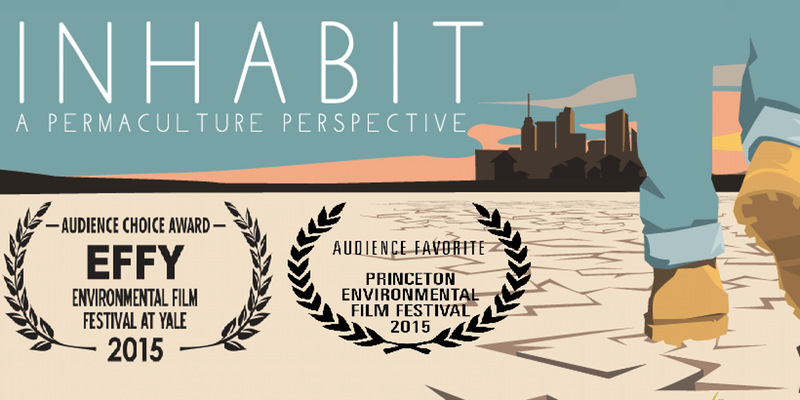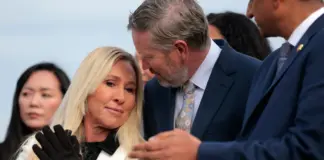
Recently, I had the enormous good fortune to enjoy the screening in my local arts movie theater of a most exciting, beautifully photographed and produced, full-length motion picture titled “Inhabit.”
I sat there in awe of the beauty of Nature, plus how humans are learning, and implementing, how to interact more ecologically intelligently with Mother Nature to grow food while incorporating and creating a totally pristine ecosystem, which includes farm animals, geese and ducks, fruits and veggies—all without the use of toxic chemicals!
Frankly, I must admit at times during the film, I was so engrossed with what I was seeing being done to grow food and food animals respectfully and with careful considerations for all aspects of the biosphere humans touch, I felt a welling up inside my chest, a wonderful feeling that there could be hope for the future of Planet Earth and humankind—especially one not based in toxic chemicals.
“Inhabit” introduces an innovative and workable concept for and about food called “Permaculture” that’s applicable in any landscape. The movie shows how Permaculture is applied in varied settings from inner cities to expansive green roofs to farms to suburban gardens—even to a forest where Shiitake mushrooms are raised on logs outdoors with geese and ducks patrolling and controlling the slug population.
Seeing handsome chestnut brown pigs enjoying life pen-free and seeking belly rubs from the farmer was ‘touching’, even though the farmer said his pigs had only one bad day in their life—the day when loaded on to the truck to become bacon. I love to go to 4H, farm shows and country fairs—just to see all the animals so proudly cared for by up-and-coming young farmers.
“Inhabit” is a film about turning problems into solutions—something I’m into. Think about that. As one person said, “Nature is the best thing we got.” The best business decision is the best ecological decision; I salute that!
Here is the trailer for the movie “Inhabit.” I hope you can get a feel for what you can do on the plot of land you own or farm. The film’s purpose is to engender the idea of a shift from Agriculture to Permaculture; what a way to go!
INHABIT: A Permaculture Perspective from Costa on Vimeo.
https://vimeo.com/ondemand/inhabit
Catherine J Frompovich (website) is a retired natural nutritionist who earned advanced degrees in Nutrition and Holistic Health Sciences, Certification in Orthomolecular Theory and Practice plus Paralegal Studies. Her work has been published in national and airline magazines since the early 1980s. Catherine authored numerous books on health issues along with co-authoring papers and monographs with physicians, nurses, and holistic healthcare professionals. She has been a consumer healthcare researcher 35 years and counting.
Catherine’s latest book, published October 4, 2013, is Vaccination Voodoo, What YOU Don’t Know About Vaccines, available on Amazon.com.
Her 2012 book A Cancer Answer, Holistic BREAST Cancer Management, A Guide to Effective & Non-Toxic Treatments, is available on Amazon.com and as a Kindle eBook.
Two of Catherine’s more recent books on Amazon.com are Our Chemical Lives And The Hijacking Of Our DNA, A Probe Into What’s Probably Making Us Sick (2009) and Lord, How Can I Make It Through Grieving My Loss, An Inspirational Guide Through the Grieving Process (2008)
Disclaimer: We at Prepare for Change (PFC) bring you information that is not offered by the mainstream news, and therefore may seem controversial. The opinions, views, statements, and/or information we present are not necessarily promoted, endorsed, espoused, or agreed to by Prepare for Change, its leadership Council, members, those who work with PFC, or those who read its content. However, they are hopefully provocative. Please use discernment! Use logical thinking, your own intuition and your own connection with Source, Spirit and Natural Laws to help you determine what is true and what is not. By sharing information and seeding dialogue, it is our goal to raise consciousness and awareness of higher truths to free us from enslavement of the matrix in this material realm.
 EN
EN FR
FR


























A good way to grow plants is the following. You dig the soil and place the AgriFarm Bamboo MWO from the site orgonodrome.gr 50cm deep in the ground. Alone it’s strong enough to cover 10 acres but it is better to make a grid. You fertilize the soil with compost you can make on your own(learn about worm composting). Make sure sure you water the soil enough and then cover it with a landscape fabric made of black permeable woven propylene. It is advisable to have two-thirds of the compost spread before milling in the spring and the rest before the soil cover is applied. You anchor the fabric well and open small holes in a row, in which you can plant. Using drip irrigation pipes, you pass a pipe along a row so that the water falls into the holes. By connecting a watering programmer to the tap, you can adjust when and for how long the automatic watering will be. Do not forget to remove the soil cover around annual plants at the end of the growing season. Also learn about Flowforms, Biodynamic agriculture and magnetic water softening.
The AgriFarm Bamboo MWO is also perfect for beekeeping(not in the ground in this case). The best combination is with a beehive from Greg Aberdeen.
I started it this spring on poor soil. But still, while enrichening in between, there are vegetables/fruit growing in it. The most spectecular I learned, about all leaf vegetables is: only use a few outside leaves and leave the plant in the soil until in stops producing. I have a few crops of lettuce, now it will last me all summer and feed many more people than just taking the crops out.:)
Thanks for the article.